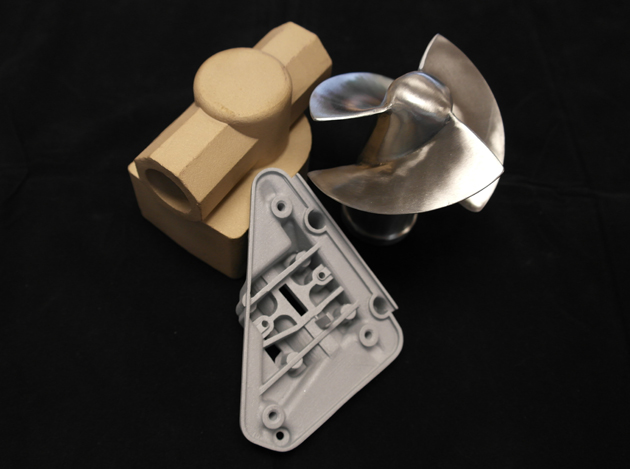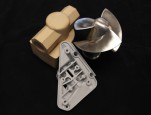At ProtoCAM, we offer metal casting services to create metal prototypes and parts. Metal casting can deliver a wide variety of results to meet every need when it comes to speed, durability, aesthetics, and budget. Metal casting methods include investment casting, sand casting, and plaster mold casting, which allow for a high degree of accuracy, durability, and quality.
What is Metal Casting
Metal casting techniques for metal prototyping and production at ProtoCAM include investment casting, sand casting, and plaster mold casting. These methods are far faster than conventional tooling and machining methods. This process is ideal for the rapid creation of short-run metal parts with a high degree of accuracy, durability, and quality. At ProtoCAM, we facilitate the investment casting process by creating investment casting patterns, or metal casting patterns.
Why Choose Metal Casting
Investment casting, also called lost wax casting, uses a 3D-printed wax pattern, a cast wax pattern, or an SLA QuickCast pattern. Parts can be created from steel, Everdur (bronze mix), aluminum, and ferrous and non-ferrous metals. Choose investment casting for:
- Fast creation of multiple metal parts without the expense of conventional tooling.
- Low-quantity (1-50) requirements.
- Rapid prototype turnaround, with metal parts being created in 2-4 weeks or less, depending on method and foundry capacity.
- Highly accurate, high-quality projects; parts require little post-casting machining and processing to remove flashing and surface preparation, and ProtoCAM’s proprietary investment casting methods allow for walls as thin as .012 inches.
Sand casting, also called sand-molded casting, is a metal casting process that uses sand as the tooling material. Mold sands that are used in sand casting include silica sand, olivine sand, chromite sand, zircon sand, and chamotte sand. Choose sand casting for:
- Smaller-budget projects; sand casting is the least expensive way to create short-run metal-cast prototypes and products.
- Rapid prototype turnaround, with metal parts being created in 2-4 weeks or less, depending on foundry capacity.
Plaster mold casting is extremely similar to sand casting. The key difference is that the molding material is plaster of paris, rather than sand. Choose plaster mold casting for:
- Projects that require a higher level of surface finish and accuracy than sand casting can achieve.
- Rapid prototype turnaround, with metal parts being created in 2-4 weeks or less, depending on foundry capacity.
Typical Metal Casting Use Cases
| Small-batch manufacturing | Simulated investment-cast parts | Temperature-resistant pieces |
| Machinable parts | Functional prototypes |


